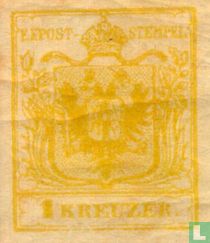Oostenrijk is een staat in Centraal-Europa. De eerste Oostenrijkse postzegels verschenen in 1850. Op dat moment was Oostenrijk een keizerrijk. In 1867 werd het keizerrijk omgevormd tot de dubbelmonarchie Oostenrijk-Hongarije. De Oostenrijkse gebieden (Cisleithanië) en de Hongaarse gebieden (Transleithanië) werden aparte postgebieden, maar tot 1871 gebruikte Hongarije nog Oostenrijkse postzegels. In 1918, na de 1ste Wereldoorlog, viel het dubbelmonarchie Oostenrijk-Hongarije uiteen. De Oostenrijkse gebieden Zuid-Tirol en Istrië werden afgestaan aan Italië, Galicië aan Polen, Boekovina aan Roemenië, Tsjechië verenigde zich met Slowakije tot Tsjechoslowakije en Slovenië en Dalmatië verenigden zich met Kroatië-Slavonië en Bosnië-Herzegovina tot de Staat van Slovenen, Kroaten en Serviërs. Het resterende deel van Cisleithanië werd de republiek Duits-Oostenrijk. Hoewel de facto onafhankelijk, beschouwde Duits-Oostenrijk zichzelf als een deelstaat van het Duitse Rijk. In 1919 verboden de Geallieerden een unie met het Duitse Rijk en veranderde de naam van het land officieel in Oostenrijk, maar tot in 1921 werden nog postzegels uitgegeven met de naam Duits-Oostenrijk. In 1934 werd Oostenrijk een bondsstaat en de facto een dictatuur. In 1938 werd Oostenrijk geannexeerd door het Duitse Rijk. Van 1938 tot 1945 maakte Oostenrijk deel uit van het Duitse Rijk en werden geen eigen postzegels meer uitgegeven. In 1945, aan het eind van de 2de Wereldoorlog, scheidde Oostenrijk zich tijdens de bevrijding door Sovjettroepen formeel af van het Duitse Rijk en werd de republiek Oostenrijk hersteld. Hoewel Oostenrijk tot 1955 bezet bleef door de Geallieerden en verdeeld was in een Franse, Britse, Amerikaanse en Sovjetsector, gaf de republiek al in 1945 postzegels uit. In 1955 werd Oostenrijk wederom onafhankelijk.
Als landnaam komen de op postzegels van Oostenrijk de volgende namen voor: Kaiserliche/Koenigliche Oesterreichische Post, Deutschösterreich, Österreich of Austria.
Waardeaanduidingen op de postzegels zijn:
60 kreuzer = 1 gulden (1850); 100 kreuzer = 1 gulden (1858); 100 heller = 1 krone (1899); 100 groschen = 1 schilling (1925); 100 pfennig = 1 Duitse reichsmark (1938); 100 groschen = 1 schilling (1945) en 100 cent = 1 euro (2002)
Oostenrijk is lid van de Wereldpostvereniging UPU.




























































